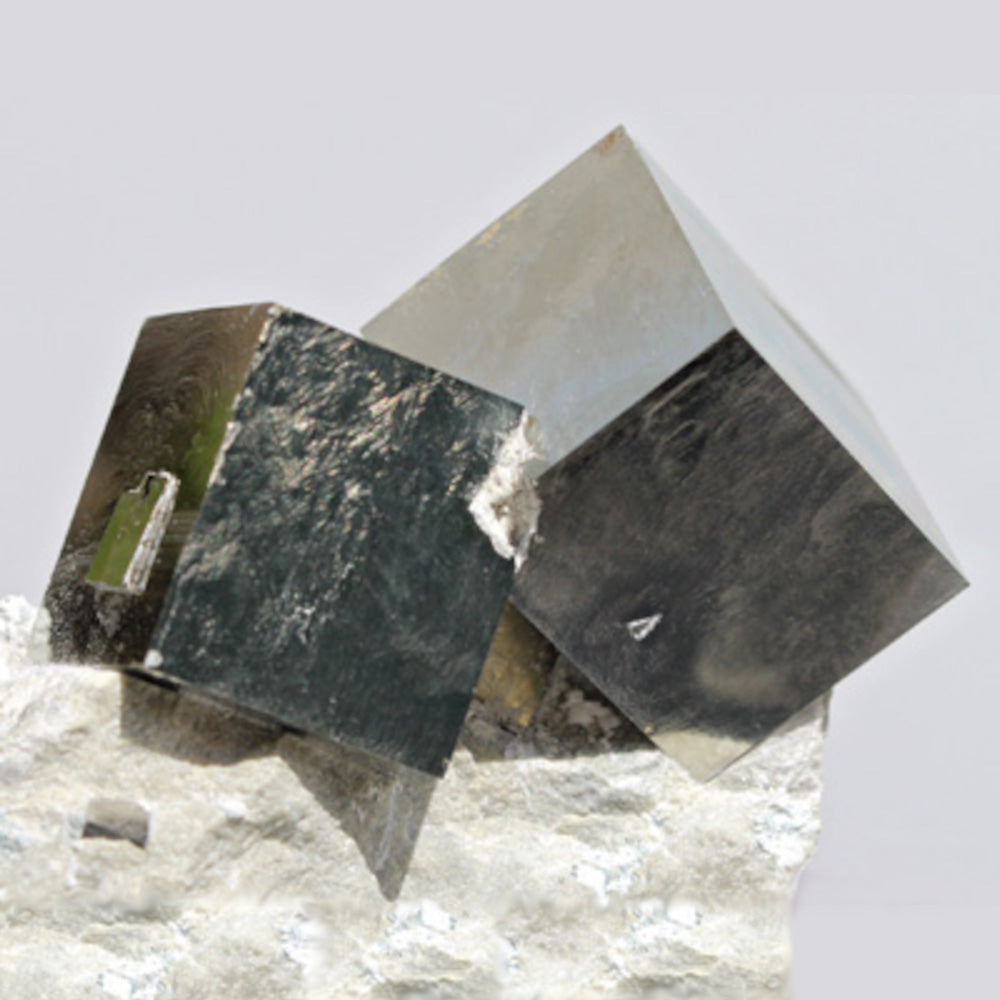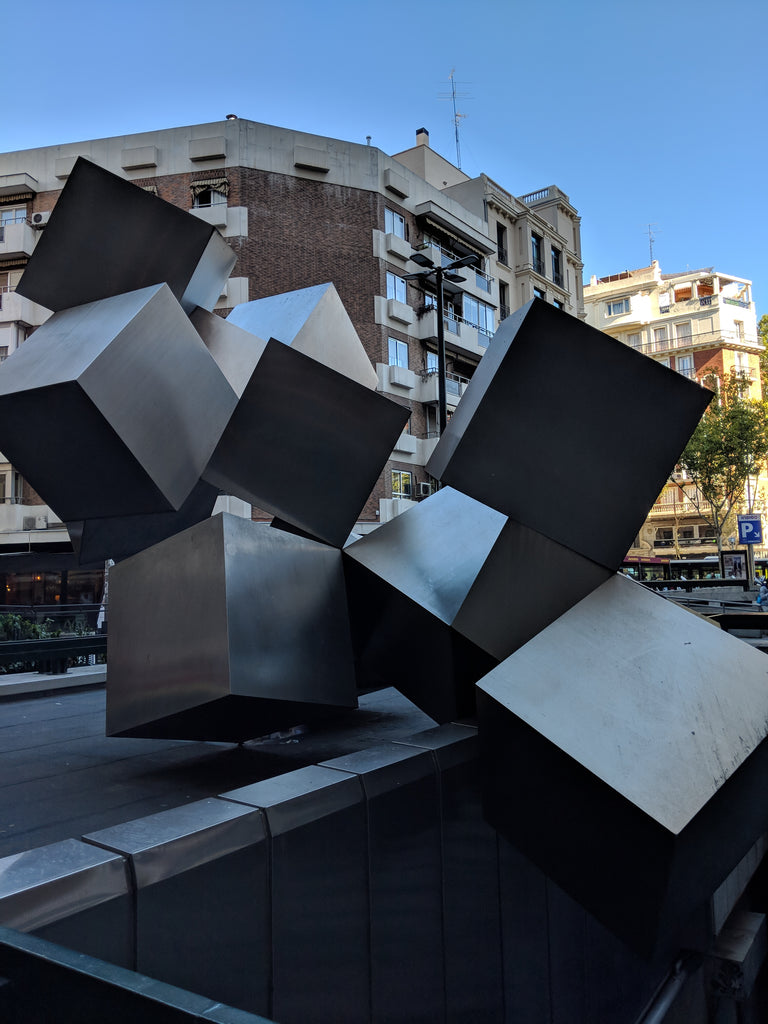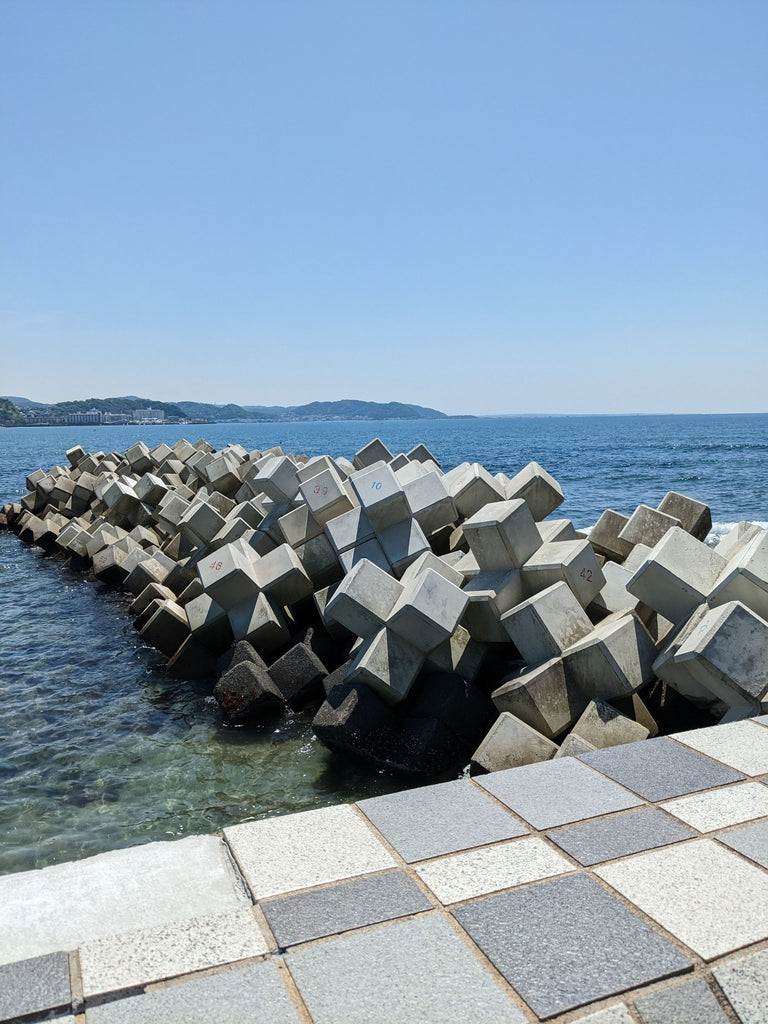
Do you remember learning how to draw a cube? I feel like it was a turning point in my childhood. The ability to capture perspective felt like a secret language that propelled me into alternative realities as I added new depths and dimensions to everything I drew.
Cubes are everywhere. They are a fundamental building block of our universe. From the ancient civilizations of Mesopotamia and Egypt to the modernist movements of the 20th century, cubic shapes have been utilized to create everything from iconic landmarks and residential spaces to art, products, packaging, furniture, and urban planning.

König Gallery in Berlin, Germany. Photo: Swain McCaughrin.

A sculpture in Madrid, Spain. Photo: Swain McCaughrin.

Wave Breakers in Kamakura, Japan. Photo: Swain McCaughrin
And the list goes on for the man-made world. They aren’t as common as irregular polygons and spheres in the natural world but do appear in crystallized minerals like pyrite.

That is an actual mineral, not a sculpture. Isn't it beautiful?!
So, why do we have such an affinity for cubes? It’s not too much of a mystery - the shape is practical, efficient, and aesthetically pleasing. They also help us understand the world around us as they serve as the basis for exploring geometric concepts such as volume, surface area, and spatial relationships.
But, their existence extends beyond the creation of matter. New findings show that they appear in the fragmentation of matter as well. A study recently published in the Proceedings of the National Academy of Sciences reveals that the average shape of rocks on Earth is a cube. Mathematician Gábor Domokos, who worked on the project explains, “If you take a three-dimensional polyhedral shape, slice it randomly into two fragments, and then slice these fragments again and again, you get a vast number of different polyhedral shapes. But in an average sense, the resulting shape of the fragments is a cube."
Despite my preference for polygons over cubes, I find their order and symmetry soothing and satisfying. Their geometric precision offers a tangible representation of the underlying principles that govern our universe, fostering a deeper understanding of the interconnectedness of all things.
Check out my cube designs in the Tectonica collection.

Photo: Raisa Berger
.
References
Plato was right. Earth is made, on average, of cubes. (2020, July 17). Penn Today. Retrieved from https://penntoday.upenn.edu/news/plato-was-right-earth-made-average-cubes
